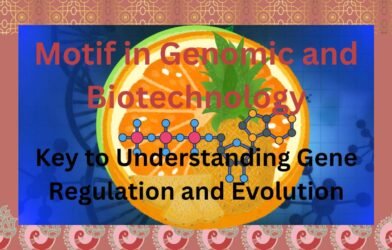Smog—a harmful mixture of air pollutants including ground-level ozone, nitrogen oxides, sulfur dioxide, and particulate matter—has become a critical environmental issue. It doesn’t just harm human health but profoundly impacts plant life, ecosystems, and global agriculture. This silent crisis is more pervasive than ever, with far-reaching consequences for vegetation and food production. As smog levels rise, understanding its effects on plants and the innovative solutions available becomes crucial for ensuring food security in a rapidly changing world.
The Growing Smog Problem: Recent Trends and Impacts on Vegetation
Global Trends in Smog Pollution
The frequency and severity of smog episodes have surged in recent years, driven by urbanization, industrial emissions, vehicular pollution, and climate change.
- South Asia’s Struggle: In Pakistan, the Punjab region faces prolonged winter smog seasons, causing severe damage to wheat, rice, and citrus crops .
- China’s Urban and Agricultural Dilemma: Industrial centers in China contribute to dense smog layers that impact nearby rice and soybean fields, leading to significant yield losses .
- Global Agricultural Hotspots: The US Midwest, known as the “Corn Belt,” and parts of Europe are increasingly facing ozone-induced crop damage, threatening global food supplies .
Devastating Effects on Vegetation
- Photosynthesis Under Siege
- Ground-level ozone damages chloroplasts, reducing photosynthesis efficiency and impairing plant growth.
- Particulate matter clogs stomata, restricting the uptake of carbon dioxide, a critical component of photosynthesis .
- Oxidative Stress
- Pollutants trigger the production of reactive oxygen species (ROS), which damage cellular structures and inhibit metabolic processes in plants.
- Persistent ROS activity leads to cell death and reduced crop yields .
- Soil Degradation
- Acid rain, a byproduct of smog, depletes essential soil nutrients such as nitrogen and magnesium, weakening plants and reducing productivity .
Economic Fallout: Smog’s Toll on Agriculture
1. Yield Reductions and Financial Losses
In areas like South Asia, where agriculture forms the backbone of economies, smog-induced losses in wheat, rice, and citrus crops are creating ripple effects on food prices and export revenues .
2. Threats to Food Security
As smog stunts crop growth and quality, food-insecure regions bear the brunt, leading to increased malnutrition and socio-economic instability globally.
Molecular and Genetic Mechanisms: How Plants Respond to Smog
Plants activate a range of genetic, molecular, and physiological mechanisms to combat smog-induced stress.
1. Genetic and Molecular Responses
- WRKY Transcription Factors
These play a pivotal role in regulating stress responses by activating antioxidant enzymes like superoxide dismutase and catalase, which detoxify ROS . - NPR1-Like Genes
These genes, identified in citrus species, enhance systemic acquired resistance (SAR) against oxidative stress, boosting plant resilience .
2. Hormonal Regulation
- Abscisic Acid (ABA): Regulates stomatal closure to minimize pollutant absorption.
- Salicylic Acid (SA) and Jasmonic Acid (JA): Activate defense-related pathways, improving antioxidant activity and stress tolerance .
3. Epigenetic Adaptations
Plants modify DNA methylation patterns and histone structures to upregulate stress-responsive genes, creating a dynamic and rapid response to pollutants .
Role of Biotechnology: Turning the Tide Against Smog Stress
1. Genetic Engineering and CRISPR-Cas9
- Scientists are using CRISPR-Cas9 to edit genes responsible for antioxidant production, enabling plants to combat oxidative stress more effectively .
- Transgenic crops with enhanced ROS detoxification pathways are being developed for smog-prone regions.
2. Molecular Breeding
Marker-assisted selection identifies natural variants with higher tolerance to pollutants, allowing breeders to propagate resilient plant lines .
3. Advanced Omics Techniques
- Proteomics: Helps identify smog-induced stress proteins, aiding in targeted genetic modifications.
- Metabolomics: Explores disrupted metabolic pathways to develop precision interventions .
4. Microbial Biotechnology
Engineered plant-associated microbes can detoxify air pollutants or enhance the plant’s natural stress tolerance. These microbial solutions offer a sustainable alternative for protecting crops .
Future Threats: Smog’s Growing Impact on Agriculture
- Intensified Climate Change Effects
Rising global temperatures are expected to increase smog episodes, further jeopardizing crop yields and ecosystems. - Soil and Water Contamination
Long-term smog exposure degrades soil and water quality, threatening agricultural productivity and biodiversity. - Food Security Risks
Smog-induced crop failures could lead to global food crises, disproportionately affecting developing nations.
What Can Be Done? Bridging Science, Technology, and Policy
1. Stricter Emission Regulations
Governments must enforce policies to control industrial emissions, promote cleaner energy, and reduce vehicular pollution.
2. Sustainable Agricultural Practices
Farmers should adopt smog-resistant crop varieties, reduce field burning, and implement precision agriculture techniques to mitigate pollution effects .
3. Urban Greening
Planting smog-tolerant species like ficus and bamboo in urban areas can reduce pollutant levels while enhancing biodiversity .
4. Public Awareness and Education
Raising awareness about the long-term impacts of smog on agriculture and advocating sustainable practices is vital for collective action.
Conclusion: A Call to Action
Smog is no longer a distant environmental concern; it is a present and growing crisis affecting plants, agriculture, and food security. While plants exhibit remarkable molecular defenses, the increasing intensity of smog demands innovative solutions. From CRISPR-engineered crops to microbial biotechnology, the synergy of science, technology, and policy can help mitigate smog’s impact and ensure a sustainable future for agriculture.
References
- FAO: Smog and Agriculture
- WHO: Air Quality and Health
- ScienceDirect: Smog’s Effects on Photosynthesis
- PubMed: Ground-Level Ozone and Crop Yields
- Springer: Climate Change and Pollutants
- Saleha Sadiq et al., NPR1-like Gene Studies
- CRISPR in AgricultureFAO: Smog and Agriculture
- Nature: Impact of Reactive Oxygen Species
- Environmental Sustainability Journal
- Metabolomics: Smog-Related Pathways
- UN Climate Change Reports






Nazia Liaqat
Excellent information
Saleha Sadiq
Thanks Nazia